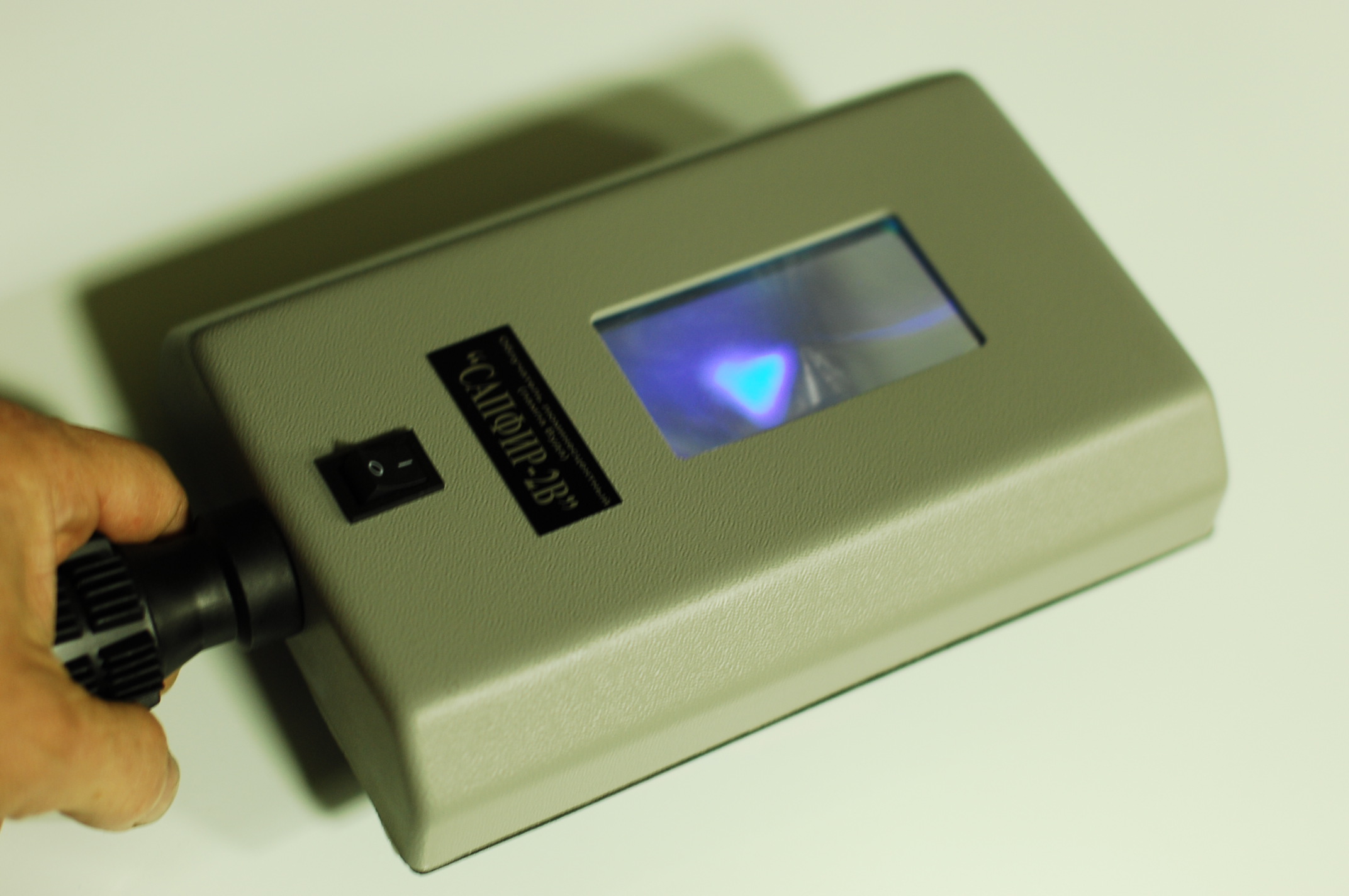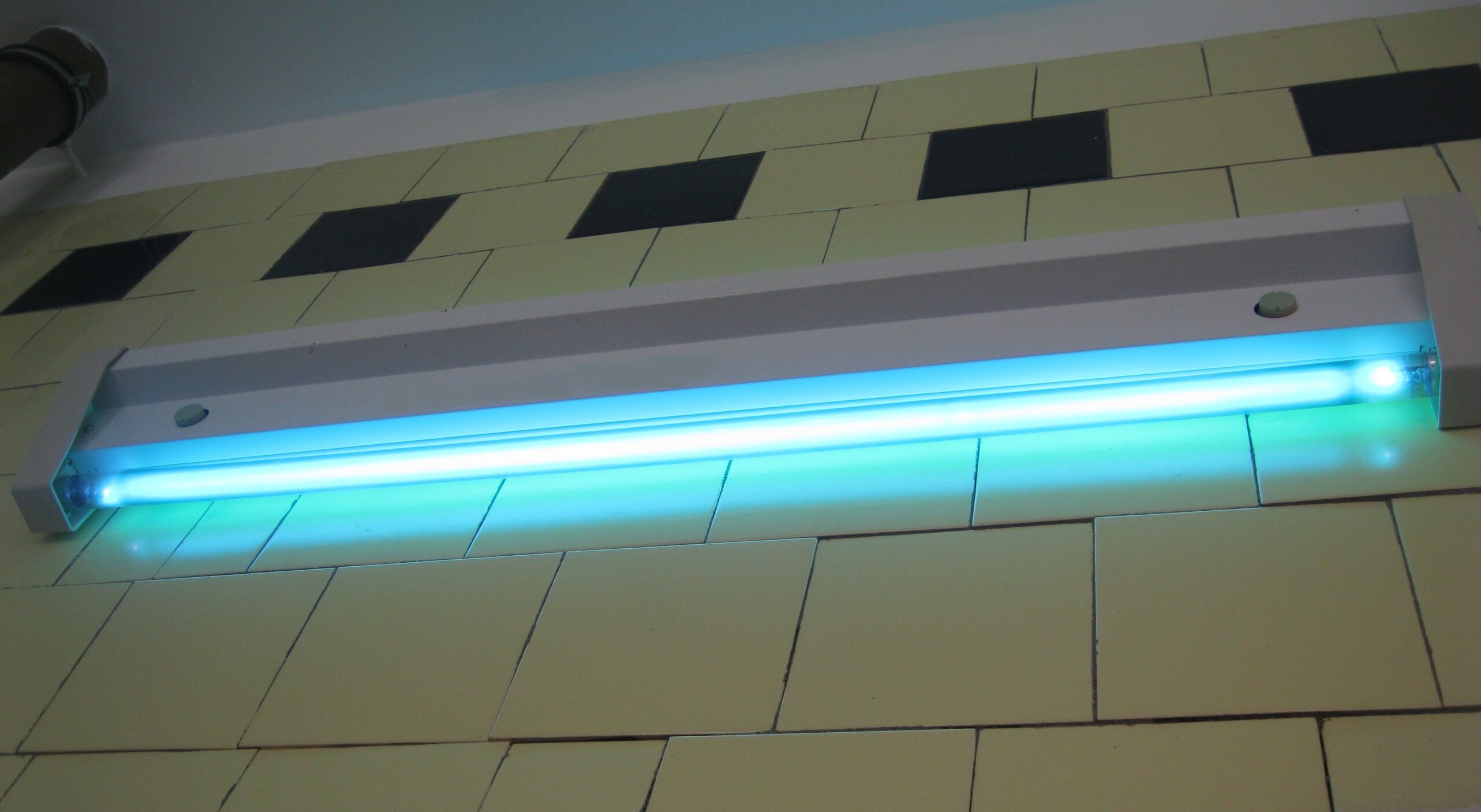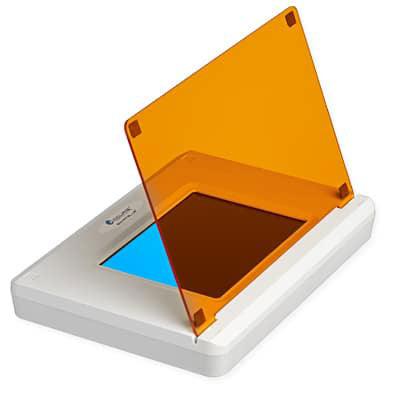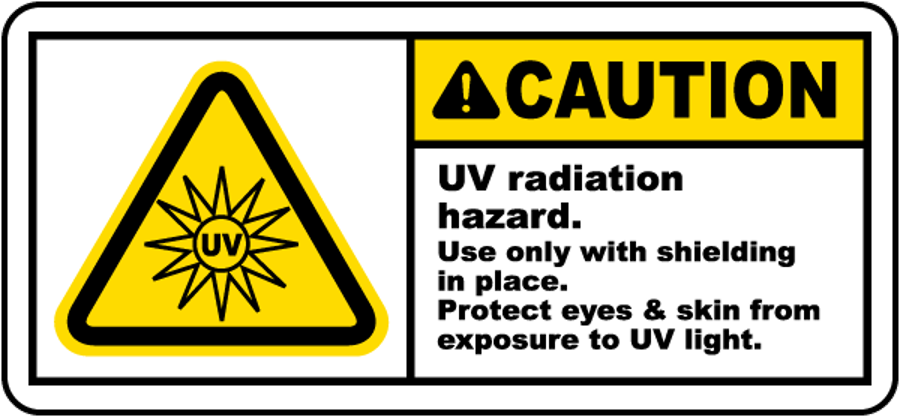Guidelines to assist university personnel that may be working with various types of ultraviolet light.
Scope:
The scope of this document outlines the types of ultraviolet light used at the University and provides guidelines for the safe use of the same including proper PPE to be worn in each circumstance.
Guidelines:
Ultraviolet (UV) radiation is divided into three different wavelength range: 1. UV-A: 315-400 nanometers (nm), 2. UV- B: 280-315 nm, and 3. UV-C: 100-280 nm. UV can be associated with adverse health effects depending on duration of exposure and the wavelength. The adverse health effects that may occur are erythema (sunburn), photokeratitis (a feeling of sand in the eyes), skin cancer, melanoma, increased skin pigmentation (tanning), cataracts, and retinal burns. Unfortunately, there are no immediate warning symptoms to indicate overexposure to UV radiation. Symptoms of overexposure including varying degrees of erythema or photokeratitis (welder’s flash) typically appear hours after exposure has occurred.
There are no regulations in the U.S. that establish limits on UV exposure in the workplace, but the American Conference of Governmental Industrial Hygienists (ACGIH) has issued Threshold Limit Values (TLVs) for occupational exposure to UV established guidelines that are widely used; ACGIH recommends that exposure not exceed 0.1 µWatts/cm2.
Safety Guidelines
Personnel that may be exposed to harmful amounts and wavelengths of UV must take adequate steps to shield themselves. Environmental Health & Safety can provide assistance in measuring UV emissions and evaluating personal protective equipment for its UV protection. If there is any potential for the eyes and face to be exposed to UV radiation, a polycarbonate face shield stamped with the ANSI Z87.1-1989 UV certification must be worn to protect the eyes and face. Ordinary prescription eyeglasses may not block UV radiation. UV certified goggles and safety glasses will protect the eyes, but it is common for lab workers to suffer facial burns in the areas not covered by the goggles or glasses.
It is important to note that ozone is produced in air by sources emitting UV at wavelengths below 250 nm if in prolonged use. Consideration will need to be given to adequate ventilation to remove or control the ozone level. The Safety Office can monitor ozone levels. If the pressure within the source is significantly different from atmospheric pressure [e.g., mercury vapor microscope lamps] consideration must be given to risk of explosion.
Below are the sources of UV light generating devices used in the lab setting, what they are used for, and included in this list are recommendations for personal protective equipment and maintenance/monitoring:
- Transilluminators (used to visualize DNA bands in gels)
- Handheld UV lamps
- Germicidal lamps in biological safety cabinets
- Germicidal lamps in Laboratories
- Crosslinkers
- Blue-emitting LEDs used for photocatalysis (some of the emissions fall into the UV range)
- Uses: Transilluminators are frequently used in research laboratories for visualizing nucleic acids following gel electrophoresis and ethidium bromide or Sybr green staining. The unit contains a UV lamp under a glass top with a clear shield to protect user from UV exposure while visualizing the sample. Researchers often need to cut bands from the gels, resulting in extended close contact to a powerful UV source.

Transillumiator - General locations: Transilluminators can be found in most research labs. Access to the rooms containing transilluminators must be controlled by closing the door and posting a warning sign on the door stating the instrument is in use. The warning sign should include Caution: High Intensity Ultraviolet Energy. Protect Skin and Eyes.
- Personal Protective Equipment: Personal protective equipment must be worn by all individuals in the room while the transilluminator is operating. The personal protective equipment must protect the eyes and skin. Transilluminators emit very intense UV light in the actinic range (200-315 nm) and will cause severe eye and skin burns if sufficient protective measures are not taken. Appropriate PPE would include gloves, lab coat with no gap between the cuff and the glove, and a UV resistant face shield.
- Maintenance: Check shields regularly for cracks or other damage. Shields must be kept clean and replaced when damaged. Do not remove safety face shield to get a closer look at material being visualized with transilluminator. Maintenance should be performed according to the manufacturer’s instructions.
- Uses: Transilluminators are frequently used in research laboratories for visualizing nucleic acids following gel electrophoresis and ethidium bromide or Sybr green staining. The unit contains a UV lamp under a glass top with a clear shield to protect user from UV exposure while visualizing the sample. Researchers often need to cut bands from the gels, resulting in extended close contact to a powerful UV source.
- Uses: Hand-held UV units are frequently used in research laboratories for visualizing nucleic acids following gel electrophoresis and ethidium bromide staining.
- General Locations: Hand-held UV units can be found in research labs. Access to rooms must be controlled by closing the door and posting a warning sign on the door stating the instrument is in use. It is important to eliminate the reflected UVR by avoiding shiny surfaces and using nonreflective UVR material around the UV source. The warning sign should include Caution: High Intensity Ultraviolet Energy. Protect Skin and Eyes.
- Personal Protective Equipment: Personal protective equipment must be worn by all individuals in the room while the hand-held UV unit is operating. Wear a face shield. Cover all exposed skin and be aware of reflective surfaces which can reflect UV radiation to unprotected parts of your skin. Appropriate PPE would include gloves, lab coat with no gap between the cuff and the glove, and a UV resistant face shield.

Hand-Held UV Lamp - Maintenance: Maintenance should be performed according to the manufacturer’s instructions.
- Uses: Germicidal lamps can be used for disinfecting the interior surfaces of a biosafety cabinet prior to and after use but National Institutes of Health (NIH), Centers for Disease Control and Prevention (CDC), National Science Foundation/ANSI, and the American Biological Safety Association (ABSA) concur that ultraviolet (UV) lamps are not recommended or necessary for decontamination inside the biosafety cabinets. Proper use and cleaning of biosafety cabinets with 10% bleach, water followed by 70% EtOH will negate any need for the use of UV lamps.Note:
- UV light is only effective for surface decontamination of areas exposed to the UV light; areas in the shadows of equipment or beneath paper/plastic will not be decontaminated.
- UV bulbs have average 6–8-month shelf life before they lose effectiveness.
- Light will shine blue even after expired as only 85% efficiency after 6000 hours of use.
- Research showed labs were not replacing and maintaining regularly which generated a false sense of safety regarding sterility
- Newer cabinets are not constructed with UV lights and UV lights must be added as a custom feature (required additional cost).
- General Locations: These lamps are found within the biosafety cabinet, above the work surface. Access to the interior of the biosafety cabinet while the lamp is operating is controlled by closing the sash. Some cabinets are equipped with an interlocking switch which deactivates the UV lamp when the fluorescent lamp is activated, however, personnel must ensure that the UV light is off prior to working at the cabinet. Placing labels that fluoresce when exposed to UV inside the biosafety cabinet should be considered if the UV lamp is not interlocked with the fluorescent lamp.
- Personal Protective Equipment: Personal protective equipment must be worn by individuals reaching into the biosafety cabinet while UV lamp is operating. The personal protective equipment must protect the eyes and skin. Appropriate PPE would include gloves, lab coat with no gap between the cuff and the glove, and a UV resistant face shield.
- Maintenance/ Monitoring: Since ultraviolet light is not used as a sole method of disinfection for the interior of biosafety cabinets, routine monitoring or the lamp’s output is unnecessary. Bulbs should be wiped off monthly with a soft cloth dampened with ethanol. The bulb must not be operating and must be cool to the touch prior to wiping. Bulb replacement should proceed according to manufacturer’s instructions based on the amount of use.

Biosafety Cabinet for Molecular biology laboratory Guidelines
- Do not use UV lights while research is being performed in the cabinet; newer cabinets have interlocks that prevent the UV light from activating when the sash is open, but older cabinets may not have this safety feature
- Minimize equipment stored in the BSC to prevent unnecessary exposure; UV light will degrade plastic over time (such as pipettes, waste containers, and vacuum line tubing)
- Most agents are inactivated after 10-15 minutes exposure time under optimum operating conditions
- Maximum ultraviolet germicidal irradiation (UVGI) time should be limited to 30 minutes – after 30 minutes there is no additional benefit of UV light exposure.
- Turn UV light off after disinfection time to conserve bulb life and energy (sustainability).
- Uses: Germicidal lamps can be used for disinfecting the interior surfaces of a biosafety cabinet prior to and after use but National Institutes of Health (NIH), Centers for Disease Control and Prevention (CDC), National Science Foundation/ANSI, and the American Biological Safety Association (ABSA) concur that ultraviolet (UV) lamps are not recommended or necessary for decontamination inside the biosafety cabinets. Proper use and cleaning of biosafety cabinets with 10% bleach, water followed by 70% EtOH will negate any need for the use of UV lamps.Note:
- Uses: Germicidal lamps installed at ceiling level in some laboratories are used for air and surface disinfection. These lamps are used secondarily to ventilation controls such as directional airflow, dedicated exhaust, and increased air exchanges.
- Access to room: Access to the room must be strictly controlled while the lamps are operating to prevent employee exposure. Many laboratories have a switch that is interlocked with the door. The UV lamp is only operational when the door is closed. Access can be controlled by installing an interlock switch such that the lamp is deactivated when the door is opened or by posting a warning sign on the door when the lamp is operating.

Germicidal quartz ultraviolet lamp - Signage: Laboratories having germicidal lamps without an interlocking switch must strictly control access to that area. The warning sign should include Caution: High Intensity Ultraviolet Energy. Protect Skin and Eyes.
- Personal Protective Equipment: Personal protective equipment would include skin and eye protection such as gloves, long sleeves with no gap between the cuff and the gloves, and a UV resistant face shield. Personnel must not enter area while the germicidal lamp is operating without proper PPE.
- Maintenance: Surface disinfection must be conducted with a chemical disinfectant specific for the organism in question. Bulbs should be wiped off on a monthly basis with a soft cloth and dampened with ethanol. The bulb must not be operating and must be cool to the touch prior to wiping. Bulb replacement occurs annually.
- Uses: Crosslinkers are used to attach nucleic acids to a surface or membrane following Southern blotting, Northern blotting, dot blotting, and Colony/Plaque lifts procedures.

UV Crosslinker - Crosslinkers produce high levels of actinic UV radiation (The actinic range, from 200 – 315 nm, is the portion of the UV spectrum that produces biological effects in humans), but they typically pose little UV hazard because they are equipped with door safety interlocks. These interlocks, which function like the interlocks on household microwave ovens, cause the crosslinker to shut off when the door opens, or they prevent the crosslinker from starting if the door is open.
- Do not use a crosslinker If the interlock system is not functioning correctly.
- Uses: Crosslinkers are used to attach nucleic acids to a surface or membrane following Southern blotting, Northern blotting, dot blotting, and Colony/Plaque lifts procedures.
- UV lights to induce mutations in plants

Blue Light Transilluminator - Blue-emitting LEDs used for photocatalysis. Very bright blue LED lights are used in Chemistry to catalyze chemical reactions. There are several Blue Light Transilluminator and Dual LED Blue/White Light Transilluminator available that can effectively excite many of the popular nucleic acid stains as UV spectrum light without the UV associated hazards. Depending on the specific wavelength these lights may produce emissions in the UV range.
- UV lights to induce mutations in plants
Protective Clothing: Wear a fully buttoned lab coat, long pants and closed toe shoes. Make sure that ALL skin is protected, including face, neck, hands and arms. Make sure there are no gaps in your protective clothing, especially at the wrist and neck areas.
Gloves: Wear disposable latex or nitrile gloves to protect exposed skin on the hands. Do not use vinyl gloves, which can transmit significant amounts of actinic UV.
Eye Protection: Always wear a full-face shield. To protect the eyes and face, use a polycarbonate face shield stamped with the ANSI Z87.1-1989 UV certification. Note: if you’re working with splash or projectile hazards, you may also need to wear safety glasses or goggles under the face shield. Ordinary prescription eyeglasses or contacts is inadequate for protection against the UV rays.
Face Shields: Only use polycarbonate face shields that are rated for UV protection. The face shield should be marked with the term Z87 to indicate that the shield meets the ANSI standard to provide at least basic UV protection. Read the specs provided with the face shield to verify that the shield provides adequate UV protection.
You may not be totally protected by the face shield if you are working over a transilluminator, wearing PPE, but you are looking up while talking to someone nearby. This would expose your throat and chin to excessive UV radiation. You must be sure that there is no exposed skin.
If you develop skin or eye irritation or pain after working with a UV source in the lab, seek medical attention at University Occupational Health Services immediately, the doctor will assess the severity of the injury and may prescribe medications to reduce the pain of the injury. After you have sought medical attention, notify EH&S about the incident by completing an SU-17. EHS will investigate your incident to find practical and helpful ways to prevent a recurrence.
- Avoid outdoors between 10 a.m. and 2 p.m. when UV rays from the sun are the greatest.
- Stay in the shade when possible.
- Wear tightly woven clothing that covers your arms and legs.
- Wear a hat with a wide brim to shade your face, head, ears, and neck.
- Wear sunglasses that wrap around and block UV rays.
- Use sunscreen with a sun protection factor (SPF) 15 or higher. More information on sunscreen can be found in the Sunscreen: The Burning Facts (EPA)
The tubes from UV sources contain mercury and therefore require specialist disposal. Contact the EHS for information. Contact the EH&S by completing the Report a Safety Concern form.
- American Biological Safety Association (2000). Position Paper on the Use of Ultraviolet Lights in Biological Safety Cabinets
- Meechan P, Wilson C (2006). Use of Ultraviolet Lights in Biological Safety Cabinets: A Contrarian View. Applied Biosafety 11 (4): 222–227
- Centers for Disease Control and Prevention; The National Institutes of Health. Biosafety in microbiological and biomedical laboratories. 6th ed. Washington, DC. 2009
- NSF International (NSF); American National Standards Institute (ANSI). NSF/ANSI
- U.S. Department of Health and Human Services, Public Health Services, CDC, and NIH. (1995). Primary Containment for Biohazards: Selection, Installation and Use of Biological Safety Cabinets, Washington, DC: U.S.



Biosafety 2022
